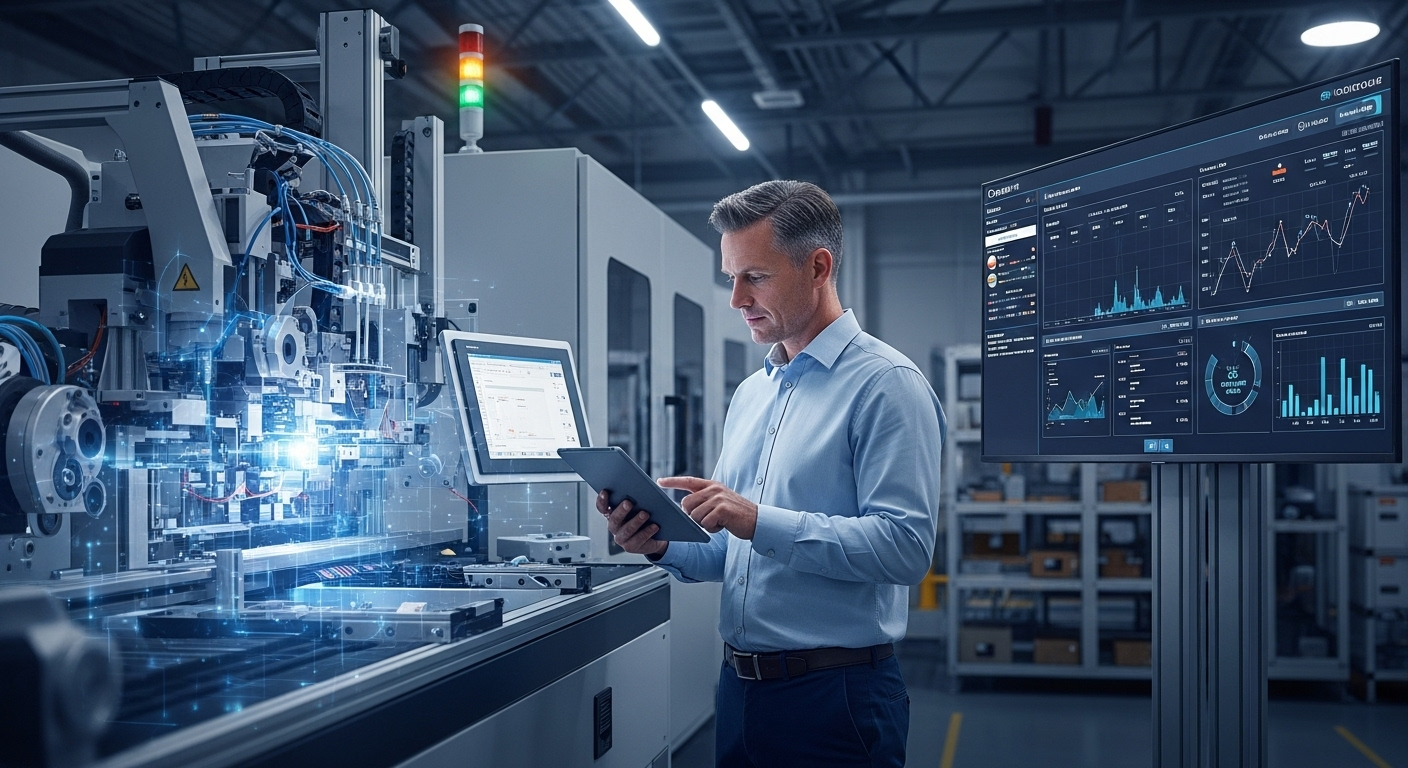Understanding Temperature Control Sensors in Industrial Machines
Temperature control is vital in industrial processes, manufacturing, and automation systems. Without accurate temperature monitoring and control, product quality suffers, equipment fails prematurely, and safety risks increase. Temperature control sensors serve as the eyes and ears of industrial thermal management systems, providing critical data that enables precise regulation of heating and cooling processes. These sophisticated devices have revolutionized how industrial machines operate, creating more efficient, consistent, and safer working environments.

How Temperature Control Sensors Work in Monitoring and Regulation
Temperature control sensors function by detecting thermal energy and converting it into electrical signals that monitoring systems can interpret. The fundamental principle relies on predictable physical changes that occur in materials when exposed to temperature variations. In industrial machines, these sensors continuously monitor thermal conditions and transmit data to control systems that make automatic adjustments to maintain optimal temperatures.
Most industrial temperature control systems operate on a feedback loop system. When a sensor detects a deviation from the set temperature range, it signals the controller, which then activates heating or cooling mechanisms to return the system to equilibrium. This closed-loop control ensures that industrial processes remain within strict thermal parameters, preventing overheating, overcooling, and the associated quality or safety issues that might result.
The sensitivity and response time of temperature sensors are particularly important in industrial applications where precise thermal control directly impacts product quality. Modern sensors can detect temperature changes as small as 0.1°C and respond in milliseconds, enabling real-time adjustments that maintain consistent processing conditions even in demanding manufacturing environments.
Common Types of Temperature Control Sensors and Their Applications
Industrial settings rely on several distinct types of temperature control sensors, each selected based on the specific requirements of the application.
Thermocouples are the most widely used sensors due to their broad temperature range (-200°C to 2500°C), durability, and relatively low cost. They work by generating a voltage at the junction of two different metals that correlates directly with temperature. Thermocouples excel in high-temperature industrial environments like furnaces, kilns, and metal processing.
Resistance Temperature Detectors (RTDs) offer superior accuracy and stability compared to thermocouples, though with a more limited temperature range (-200°C to 850°C). RTDs operate on the principle that electrical resistance in metals changes predictably with temperature. Their precision makes them ideal for food processing, pharmaceutical manufacturing, and chemical reactions where tight temperature control is critical.
Thermistors provide exceptional sensitivity within a narrow temperature range, making them perfect for applications requiring detection of small temperature changes. Unlike RTDs, thermistors typically have a negative temperature coefficient, meaning their resistance decreases as temperature rises. They’re commonly used in HVAC systems, refrigeration equipment, and sensitive electronic equipment protection.
Infrared sensors enable non-contact temperature measurement by detecting thermal radiation emitted from objects. This capability makes them invaluable for moving parts, hazardous materials, or extremely hot surfaces that would damage contact sensors. Modern manufacturing lines, heat treatment processes, and quality control systems frequently employ infrared sensing technology.
Factors to Consider When Selecting a Temperature Control Sensor
Choosing the appropriate temperature sensor requires careful evaluation of several critical factors. The operating temperature range must match application requirements—thermocouples excel at extreme temperatures while RTDs and thermistors offer better accuracy within moderate ranges. Environmental conditions including humidity, vibration, chemical exposure, and electrical interference can significantly impact sensor performance and longevity.
Response time determines how quickly the sensor detects temperature changes, a crucial factor in fast-moving processes. While thermistors typically respond fastest, followed by thermocouples and then RTDs, the installation method and protective housing can significantly affect actual response times in industrial settings.
Accuracy and stability requirements must align with process tolerances. RTDs generally provide the highest accuracy (±0.1°C) and long-term stability, while standard thermocouples might drift more over time with typical accuracy around ±1-2°C. For critical applications, sensor calibration frequency becomes an important consideration.
Practical considerations like installation constraints, maintenance requirements, and replacement costs must also factor into selection decisions. Some sensors require direct contact with the medium being measured, while others can operate through protective wells or at a distance, affecting both installation complexity and ongoing maintenance needs.
Role of Temperature Sensors in Industrial and Home Automation
Temperature sensors form the backbone of industrial automation systems by providing the data necessary for process control. In manufacturing, they ensure materials are processed at optimal temperatures, improving quality consistency and reducing waste. Food and beverage producers rely on precise temperature monitoring throughout production, storage, and transportation to maintain safety and quality.
Energy management systems leverage temperature data to optimize heating, cooling, and power consumption across industrial facilities. Smart factories use networks of temperature sensors to coordinate complex processes, identifying inefficiencies and preventing equipment failures through predictive maintenance. When sensors detect unusual temperature patterns, they can trigger automated alerts or emergency shutdowns to prevent equipment damage or unsafe conditions.
The principles of industrial temperature sensing extend to home automation as well. Smart thermostats utilize multiple temperature sensors to create comfortable living environments while maximizing energy efficiency. Appliances like refrigerators, ovens, and water heaters incorporate temperature sensing technology to improve performance and safety. Even home security systems may include temperature monitoring to detect potential fire hazards or freeze conditions.
Advances in Temperature Sensing Technology for Improved Accuracy
Recent technological advances have dramatically enhanced temperature sensing capabilities. Miniaturization has enabled the development of microscale and even nanoscale sensors that can be integrated directly into components and materials, providing unprecedented monitoring capabilities. These tiny sensors allow for monitoring multiple points within a single machine or process, creating detailed thermal profiles that improve overall control.
Wireless and IoT-enabled sensors have eliminated the need for complex wiring, reducing installation costs and allowing for sensors in previously inaccessible locations. These connected devices transmit data continuously to cloud-based monitoring systems, enabling remote observation and analysis of industrial processes. The integration of temperature data with other process variables creates a comprehensive view of system performance.
Artificial intelligence and machine learning algorithms now analyze temperature data patterns to predict equipment failures before they occur. By identifying subtle deviations from normal operating temperatures, these systems can schedule preventive maintenance, reducing costly downtime and extending equipment life. Self-calibrating sensors with built-in reference points maintain accuracy over longer periods, reducing maintenance requirements and improving reliability.
Multi-function sensors that simultaneously measure temperature alongside humidity, pressure, or vibration provide more comprehensive environmental monitoring with fewer devices. These integrated solutions streamline installation and create more coherent data for analysis and process control.
As industrial processes continue to demand greater precision and efficiency, temperature control sensing technology will remain at the forefront of automation and control system innovation, driving improvements in quality, safety, and productivity.




